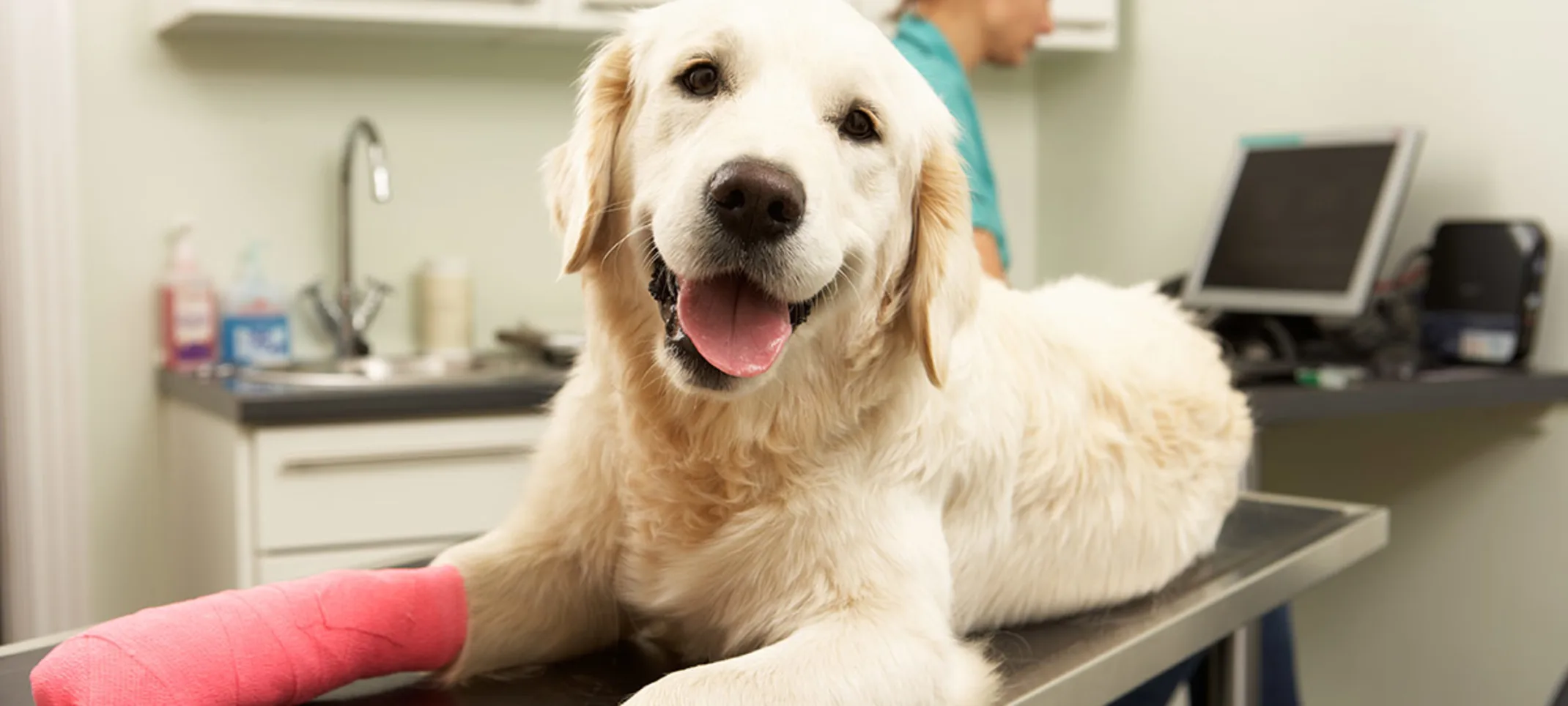Foothills Veterinary Hospital
Orthopedic Surgery
Orthopedic surgery can help pets who suffer from joint problems, torn ligaments, broken bones, and even help correct congenital problems.

Overview
Orthopedic surgery treats bones, joints, ligaments, and muscles—areas in which your pet may feel pain in from a variety of conditions. If veterinary orthopedic surgery is recommended for your pet, we will do everything possible to keep them safe and comfortable before, during, and after the surgery.
Why would my pet need orthopedic surgery?
Orthopedic surgery can help animals who suffer from joint problems, torn ligaments, broken bones, and can even help correct congenital problems. Most orthopedic surgery is focused around the cranial cruciate ligament (CCL), sometimes referred to as the Anterior Cruciate Ligament (ACL).
When should I seek orthopedic care for my pet?
Pay attention to the way your pet is moving around, any unusual changes may mean they have an orthopedic condition.
Typical symptoms of an orthopedic disorder include difficulty getting up, favoring a leg intermittently when walking, limping - swelling in the leg, stiffness or decreased activity level. If you notice any of these problems, you should take your pet to our facility for an examination.
How are typical orthopedic injuries treated?
CBLO Knee Surgery for Dogs
What is the Cranial Cruciate Ligament?
The cranial cruciate ligament (CCL) is the ligament in a dog’s knee which is most easily compared to the ACL in human knees. Unlike humans with ACL problems, however, CCL issues in dogs tend to be chronic due to regular changes in the knee joint.
When a dog does have an acute injury to the CCL, it can often result in severe lameness in the affected leg. The CCL is a vital part of the stability of the knee joint and any injury or instability to the CCL can lead to further problems and intense pain for a dog.
CBLO vs. TPLO:
If your dog is diagnosed with CCL disease, surgery is often necessary to repair the ligament, recreate stability in the knee, and keep the dog comfortable. There are several surgical techniques available for the treatment of CCL disease, the most widely-used of which is the Tibial Plateau Leveling Osteotomy, or TPLO. With TPLO, a cut is made in the upper part of the dog’s tibia bone and the bone fragment created by this cut is then rotated and plated together to create a stable platform for the femur, essentially making the absence of a stable CCL a non-issue.
TPLO is a great method for decreasing the forces that the CCL normally counteracts but it does not actually eliminate the back and forth movement of the femur on the tibia, which can result in the breakdown of joint cartilage in the knee and ultimately lead to further joint damage or even arthritis.
In recent years, veterinary surgeons have sought to find an alternative method to the TPLO that can eliminate the painful and damaging back and forth movement of the femur on the tibia. The CORA-Based Leveling Osteotomy, or CBLO, was created to fill this need. It is based on the same principles as the TPLO but functions by adjusting the CORA, or center of rotational axis, of the dog’s knee so that the femur is in a more comfortable, weight-bearing position.
Why Choose CBLO:
CBLO is the best choice for many dogs experiencing CCL disease. Some of the advantages of this technique include:
No need to enter the joint while making the cut in the bone, thereby avoiding inadvertent damage to the cartilage
Decreased wear and tear on the joint cartilage over time
The ability to perform the surgery before the closure of the knee’s growth plates, if necessary
Better overall stability for the dog
A quicker recovery period than other techniques and excellent overall short and long term results, especially when paired with physical rehabilitation and dietary changes
Tibial Tuberosity Advancement (TTA)
Tibial tuberosity advancement is a reconstructive surgery used to repair a torn ligament by changing the dynamic of the ligament so that it is no longer necessary for the stabilization. The surgery uses titanium implants and has a quick recovery time.
Luxating Patella Surgery
Patellar luxation is a dislocated knee cap and most commonly seen in small breed dogs. Most patellar luxation occurs when the patellar displaces from its normal position to the inside of the knee. Pets with this condition may have an intermittent non-weight bearing lameness and you may even hear a popping noise in their knee. There are many ways to treat this from a simple knee brace for a Grade 1 luxation, to realignment surgery for lower grade luxations. Bring your pet in so we can determine the best way to treat the luxation.
Fracture Repairs
A fracture is a break in the bone or cartilage and can be repaired from simple external splinting to more advanced internal plating. Fractures are typically caused by trauma, a disease or tumor in the bone, or stress applied to a certain bone.
Our veterinarians adhere to the highest level of care standards for all surgical procedures. Our highly skilled doctors place the utmost emphasis on pain management to ensure your pet is safe and comfortable throughout the treatment process. Using advanced technology, your pet's vital signs are monitored by our veterinary technicians, who will remain with your pet through recovery.
